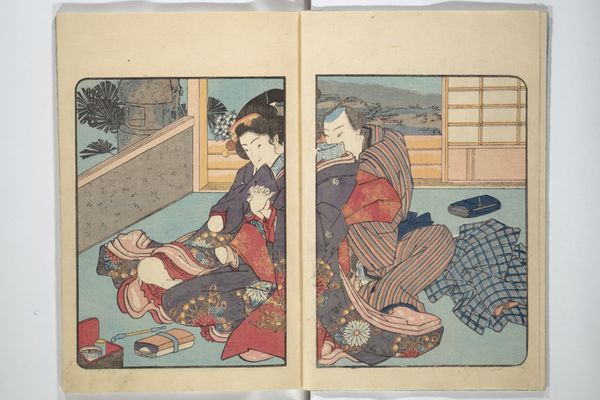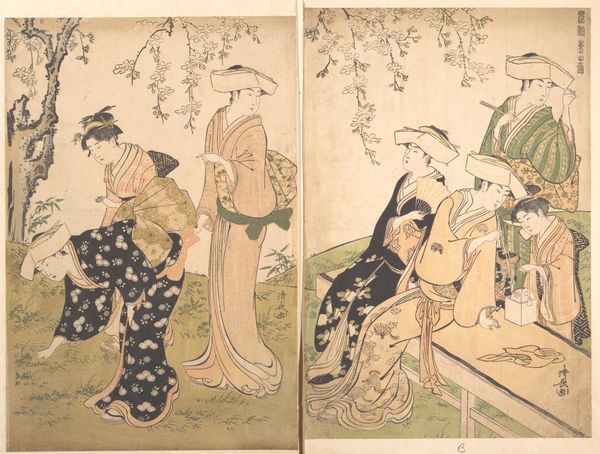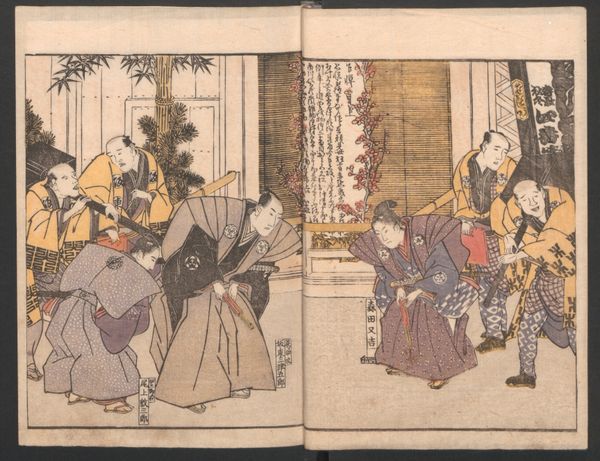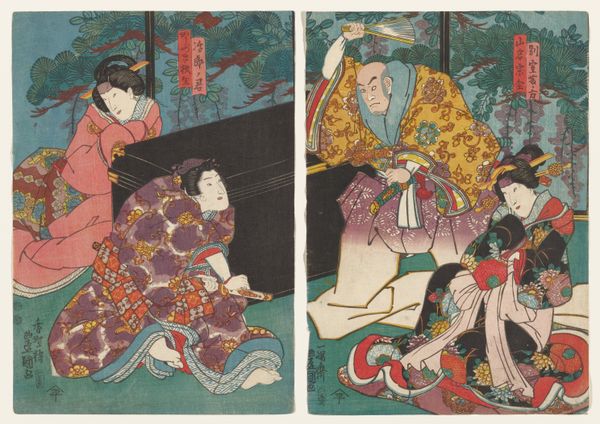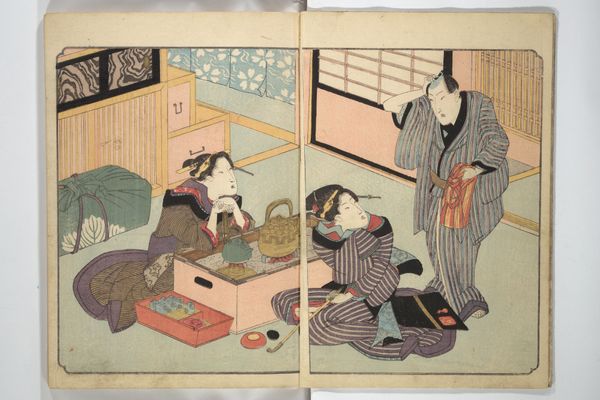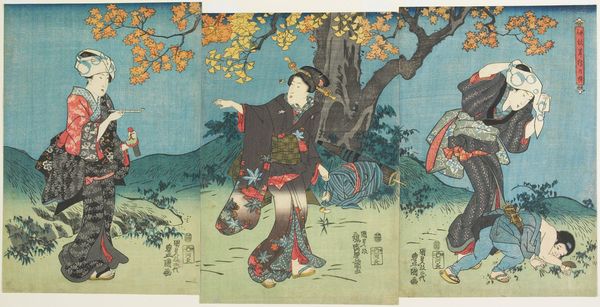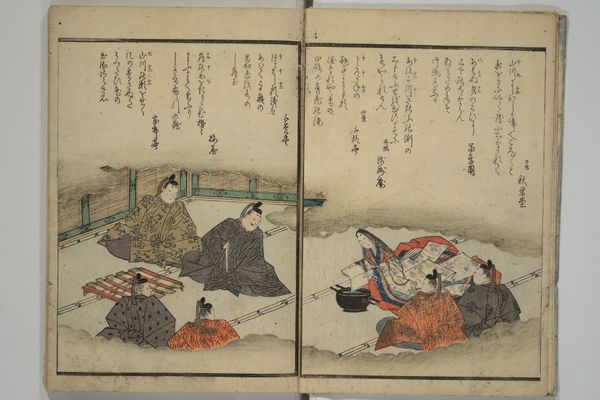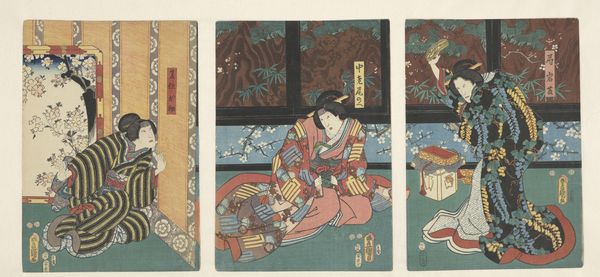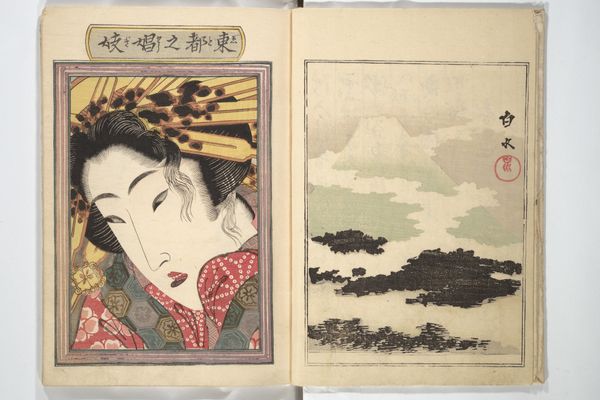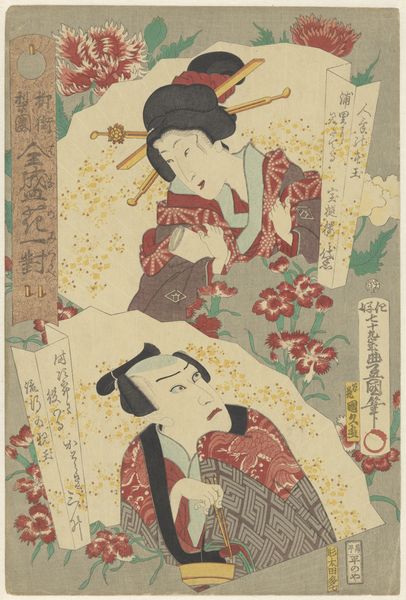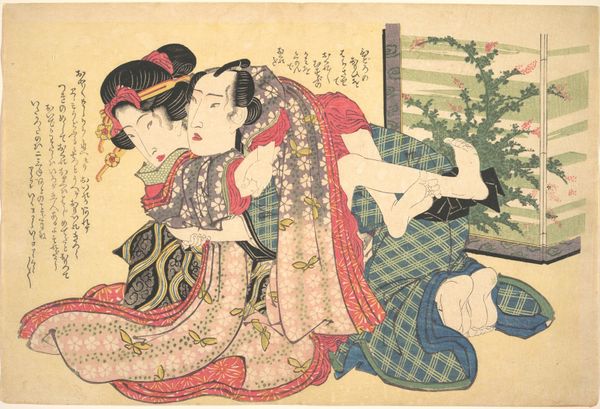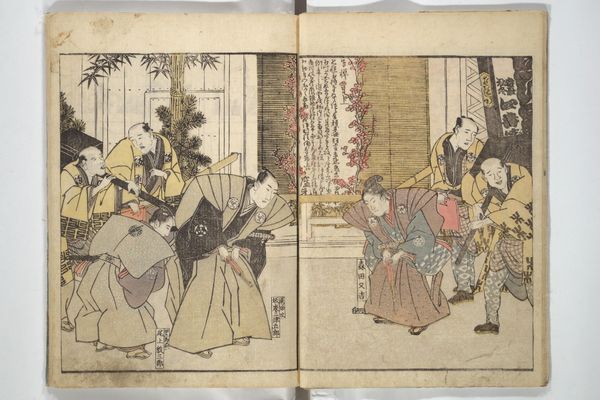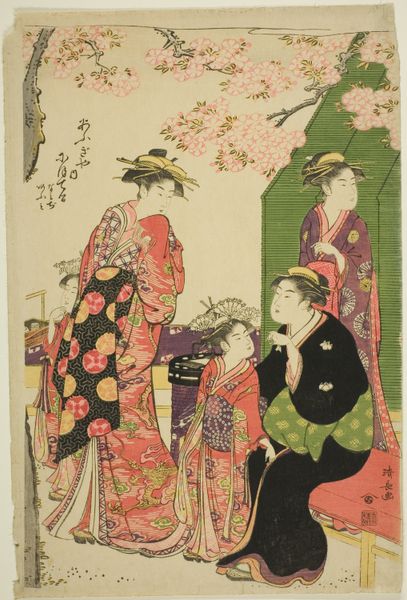![A Modern Day "Clear Mirror" (Masukagami 万寿嘉々見) : [volume 1] by Keisai Eisen](/_next/image?url=https%3A%2F%2Fd2w8kbdekdi1gv.cloudfront.net%2FeyJidWNrZXQiOiAiYXJ0ZXJhLWltYWdlcy1idWNrZXQiLCAia2V5IjogImFydHdvcmtzL2U0NWFkOTg2LWY5ZTMtNDAwZC1iMTk3LTMzM2E3MDFmNjllZC9lNDVhZDk4Ni1mOWUzLTQwMGQtYjE5Ny0zMzNhNzAxZjY5ZWRfZnVsbC5qcGciLCAiZWRpdHMiOiB7InJlc2l6ZSI6IHsid2lkdGgiOiAxOTIwLCAiaGVpZ2h0IjogMTkyMCwgImZpdCI6ICJpbnNpZGUifX19&w=3840&q=75)
A Modern Day "Clear Mirror" (Masukagami 万寿嘉々見) : [volume 1] 1822
0:00
0:00
print, paper, woodblock-print
#
portrait
# print
#
book
#
asian-art
#
ukiyo-e
#
figuration
#
paper
#
coloured pencil
#
woodblock-print
Dimensions: each: 8 7/8 × 6 5/16 in. (22.5 × 16.1 cm)
Copyright: Public Domain
Curator: This open book showcases two striking figures, each on their own page. Created by Keisai Eisen in 1822, this woodblock print is titled "A Modern Day 'Clear Mirror'," part of the *ukiyo-e* tradition. What impressions strike you? Editor: Immediately, a sense of melancholic beauty. The color palette, although vibrant with floral patterns on the clothing, is muted. There's a wistful air about the figures, particularly the woman on the right, with her downward gaze. Curator: The figures and the vibrant *ukiyo-e* style immediately suggest to me actors depicted on *Uta-ezōshi,* small, popular printed books which contributed greatly to create visual stereotypes. Editor: So, these stereotypes – were they reflective of social norms at the time? Was Eisen commenting on the social roles and perceptions of these people? Curator: Exactly. "A Modern Day 'Clear Mirror'" points to an explicit cultural reference; it is meant to hold a "mirror" up to present day and evoke some understanding about past representations of actors' roles. What's fascinating is how stereotypes tend to reveal as much as they obscure. What does this visual type communicate through the use of symbolic elements such as gesture? The gesture, particularly of the man with what seems a flute on the left, directs the viewers gaze, leading into the symbolic narrative itself. Editor: The composition feels carefully balanced, with the male figure leaning towards the center and his facial expression almost demanding the audience's attention. His counterpart looks away, absorbed and self-contained. Curator: Indeed. And what’s even more striking is to observe in how far these gendered poses persist today, informing similar visual representations and stereotypes. It begs a larger questions about power structures in the visual field. Editor: Definitely. This brief journey has shown how this striking historical artwork encourages not only appreciation, but also interrogation, a prompt for us to question continuities from history until our present. Curator: It invites us to consider visual and cultural memory, yes. In revisiting Eisen's “A Modern Day 'Clear Mirror',” perhaps we've not just observed an artwork, but glimpsed ourselves reflected within.
Comments
No comments
Be the first to comment and join the conversation on the ultimate creative platform.
